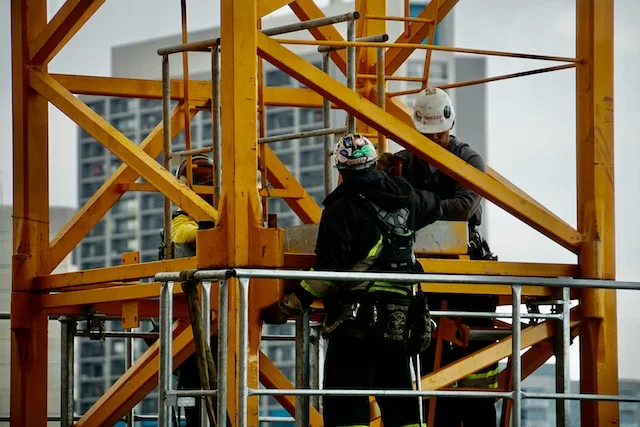Building Practices: Trends and Innovations in the Construction Industry

Are you a part of the construction industry looking to keep up with the latest trends and innovations? If so, then you’ve come to the right place. In this blog post, we’re diving into some of the newest advances in building practices that are revolutionizing how construction projects happen around the world. From digital tools and alternative materials to green initiatives and safety protocols, these developments have helped streamline processes for better efficiency and long-term sustainability. So if you want to stay informed on what’s current in the industry, read on!
Roofing Innovations
Roofing has seen a surge in innovations recently, incorporating technology and sustainability at its core. The introduction of solar roof tiles, for instance, is a significant leap forward in green initiatives. These tiles, virtually indistinguishable from traditional tiles, generate renewable energy, reducing reliance on grid power and thus lowering utility bills. Another trend is the commercial roofing systems that are being designed to capture rainwater and use it for non-potable purposes such as irrigation or toilet flushing. This not only reduces water wastage but also lowers operating costs for buildings.
Prefabrication and Modular Construction
Prefabrication and modular construction are making a significant impact in today’s construction industry. By assembling sections of a building off-site and then transporting them for installation, these methods greatly reduce construction time, waste, and overall costs. Moreover, they allow for better quality control, as components are built in controlled environments, away from the variables of weather and onsite errors.
Modular construction takes this a step further, creating large-scale, fully outfitted sections of a building that can be put together on-site like a giant 3D puzzle. Not only does this reduce the complexity of on-site construction, but it also promotes safer construction practices. The growing trend for smart, self-sufficient buildings is also being facilitated by these methods, with smart devices and energy-efficient systems integrated during the manufacturing process.
Use of Advanced Building Materials
The quest for sustainability and efficiency in the construction industry has led to the exploration and adoption of advanced building materials. Engineered wood, for example, presents a sustainable alternative to conventional lumber, offering superior strength and durability while promoting responsible forestry practices. This engineered material also allows for greater design flexibility and speedier construction times.
Cross-laminated timber (CLT), a type of engineered wood, has gained popularity due to its impressive strength and ability to reduce a construction project’s carbon footprint. It’s lightweight, easy to work with, and can be pre-cut to exact dimensions, minimizing waste and speeding up the building process.
Innovations in concrete are also noteworthy. Self-healing concrete, infused with bacteria that produce limestone, can repair its cracks, enhancing the lifespan of structures and minimizing maintenance costs. Furthermore, the development of translucent concrete, which can transmit light due to embedded optical fibers, opens up new avenues for architectural creativity while potentially reducing the need for artificial lighting.
Energy Efficiency and Smart Homes
In the realm of construction, an emerging trend is the rise of energy-efficient, smart homes. These houses, equipped with advanced technology, are designed to optimize energy use, lower costs, and enhance comfort for the occupants. A core feature of these homes is automation, where systems and devices can be programmed to operate at optimal times or under specific conditions. For instance, smart thermostats can be set to adjust the temperature according to the time of day or occupancy, reducing energy waste.
Lighting is another area where significant energy savings can be made. Smart lighting systems can be programmed to switch on or off based on occupancy or daylight availability, and they also allow homeowners to control lighting remotely.
Integrating renewable energy systems, such as solar panels or wind turbines, into the building design is another characteristic of smart homes. These systems can generate electricity for the home, reducing reliance on grid power and potentially allowing homeowners to sell excess power back to the grid.
Finally, smart appliances, such as energy-efficient refrigerators, washing machines, and ovens, can further contribute to energy savings. These appliances are designed to use less energy while still performing as effectively as their traditional counterparts. By embracing the trend towards energy efficiency and smart homes, the construction industry is playing a critical role in conserving resources, reducing carbon emissions, and creating a more sustainable future.
In conclusion, the construction industry is continually evolving with new trends and innovations that are shaping the way buildings are designed, constructed, and operated. From cutting-edge materials to advanced building methods and sustainable practices, these developments are driving efficiency, safety, and sustainability in the industry. By staying informed and embracing these changes, we can build a better future for generations to come.





